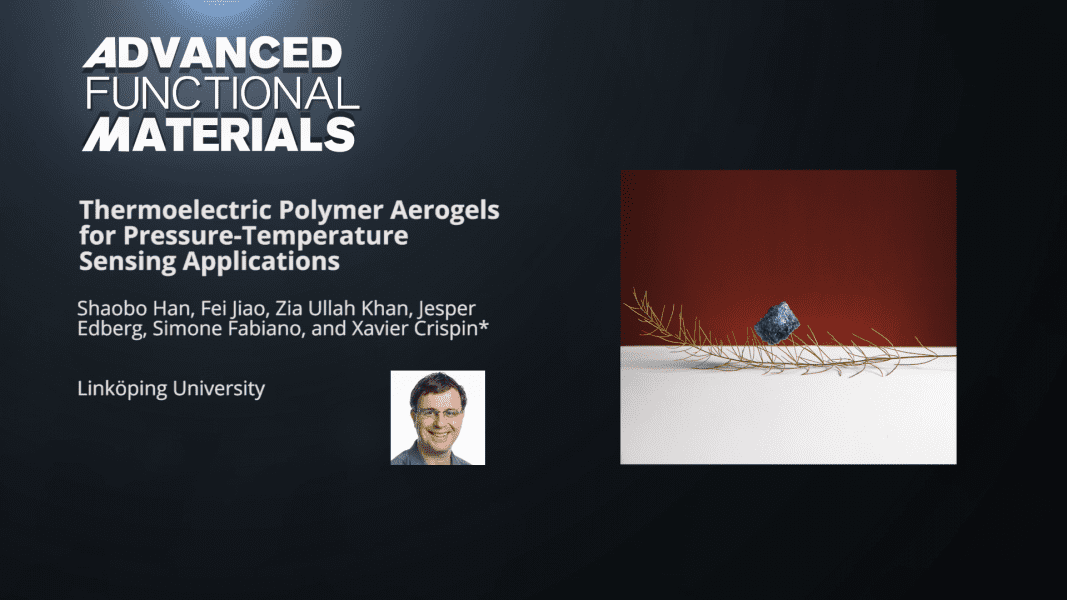A team of researchers from the University of North Carolina and the University of Washington introduce therapeutic nanoparticles that enhance the delivery of brain-derived neurotrophic factor (BDNF) to the brain for therapy of neurological diseases.
![Brain-Derived Neurotrophic Factor Nanoformulation for Treating Neurological Diseases [Video]](https://www.advancedsciencenews.com/wp-content/uploads/2018/02/adfm201703982_ASN_image.png)
![Brain-Derived Neurotrophic Factor Nanoformulation for Treating Neurological Diseases [Video]](https://www.advancedsciencenews.com/wp-content/uploads/2018/02/adfm201703982_ASN_image.png)
A team of researchers from the University of North Carolina and the University of Washington introduce therapeutic nanoparticles that enhance the delivery of brain-derived neurotrophic factor (BDNF) to the brain for therapy of neurological diseases.
![A Hybrid Hydrogel Ink for Smart Materials [Video]](https://www.advancedsciencenews.com/wp-content/uploads/2018/02/adfm201705365_ASM_image.png)
A functional hybrid ink for 3D-printed hydrogels is developed by Shlomo Magdassi from the Hebrew University of Jerusalem, Yi Long from Nanyang Technological University, and their colleagues. Their simple approach enables the printing of smart materials with high flexibility.
![A Detailed Study of Misfit Dislocations in Complex Oxides [Video]](https://www.advancedsciencenews.com/wp-content/uploads/2018/02/adfm201704437_ASN_image.png)
A team of researchers combine atomic resolution imaging and spectroscopic techniques to determine the structure of misfit dislocations in a perovskite-type heteroepitaxial system. The results shed light on the complex chemical behavior of misfit dislocations formed at the interface between two multinary oxides.
![Lipid-based Films for Biomedical Applications [Video]](https://www.advancedsciencenews.com/wp-content/uploads/2018/02/adfm201704356_ASN_image_without_logo.png)
Cecilia Leal from the University of Illinois and co-workers summarize the current research on lipid-based films for biomedical applications and provide new insight into multilayered hybrid lipid–polymer films for substrate-mediated drug delivery.
![ZIF-Derived Bifunctional Air Electrodes for Rechargeable Zinc–Air Batteries [Video]](https://www.advancedsciencenews.com/wp-content/uploads/2018/02/adfm201705048_ASN_image.png)
A simple, inexpensive, and scalable method is developed to produce cobalt-nanoparticles-encapsulated nitrogen-doped carbon nanotubes (Co-N-CNTs) as bifunctional air electrodes for Zn–air batteries.
![Tumor-Targeting “Polywraplex” for siRNA Delivery [Video]](https://www.advancedsciencenews.com/wp-content/uploads/2018/02/ASN_feature_adfm201703207.jpg)
Tuo Jin and colleagues from Shanghai Jiao Tong University synthesize a synthetic carrier system for small interfering RNA (siRNA) with customizable size, pH-responsive degradability, and optimized surface population of cell-targeting agent.
![Organic Ferroelectric Tunnel Junction for Memristive Devices [Video]](https://www.advancedsciencenews.com/wp-content/uploads/2018/01/ASN_featured_adfm201703273_001.jpg)
Researchers report a ferroelectric tunnel junction for organic-based memristors having a record-high tunneling electroresistance (TER) at room temperature, which could ensure large data integration density in computers.

Xavier Crispin and co-workers from Linköping University, Sweden, report a thermoelectric polymer aerogel with dual-sensing capability. This single-material device can deliver independent pressure and temperature assessments.

Via a bottom-up approach this research shows the production of scalable, stable InGaN nanowire photonic crystals for high efficient LEDs.

Dr. Marta Mas-Torrent and her team are developing high-performance electrolyte-gated field-effect transistors (EGOFETs), electronic devices capable of working in an aqueous environment.